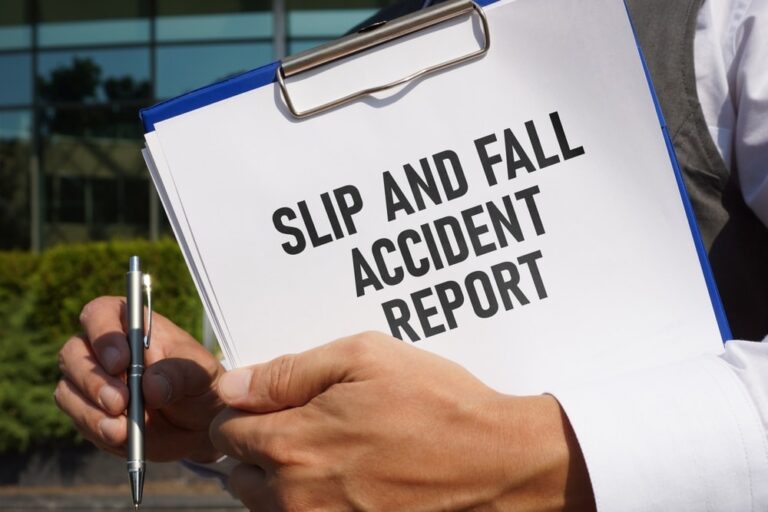Key Takeaways:
- Prioritize medical treatment: Follow doctors’ instructions and attend all appointments to document your recovery.
- Maintain open communication: Keep your attorney updated on health changes, contact info, and witness information.
- Document thoroughly: Take photos of injuries, keep a journal of pain and daily limitations, and track all accident-related expenses.
- Follow legal guidance: Let your attorney handle communications with insurance companies and other parties to protect your case.
- Stay informed and patient: Attend scheduled calls, ask questions, and trust your attorney’s expertise while focusing on recovery.
You’ve taken the important step of hiring a personal injury attorney, now what? Understanding how to play an active role in your case becomes vital at this point. It’s crucial to know how to be involved in your case. This means taking an active role and being a part of the process.
Treatment is the Most Important Part of Your Case.
Making sure you keep up with the medical treatment you need is important when you’ve had a personal injury. The top priority is getting better, so it’s crucial to stick to what your doctors recommend. If you have to see more doctors or specialists, make sure to get those scheduled as soon as possible because there might be a wait.
Seeking and adhering to additional medical appointments is not only about timely care but also about documenting the extent of your injuries. Each visit to a healthcare professional acts like a chapter in your medical story. It helps build a comprehensive narrative that not only outlines the initial impact of the accident but also highlights the ongoing effects on your life. These appointments act as integral pieces of evidence that contribute to the overall understanding of your case.
Your medical treatment is like a roadmap toward healing. Each appointment and each recommended treatment is a marker on this map. By actively participating in your treatment plan, you not only prioritize your health but also contribute significantly to the documentation of your injuries. This documentation becomes crucial in illustrating the full extent of the impact the accident has had on your life. The narrative created through these consistent follow-ups becomes a powerful tool when presenting your case. It helps establish a clear timeline of your recovery efforts, demonstrating your ongoing commitment to regain your health.
Communication is Key.

In addition to medical updates, make sure you notify your attorney about any changes in your contact information. If you move to a new address or get a different phone number, sharing this information promptly is crucial. This ensures your attorney can reach you when needed, maintaining a smooth line of communication throughout the duration of your case.
In addition to visual documentation, keeping a journal provides a personalized account of the challenges stemming from your injury. This goes beyond just physical injuries; you can track pain levels, emotional distress, and any limitations imposed on your daily activities. This journal becomes a powerful tool, offering a window into the full extent of your suffering, it’s like writing your story in real-time, providing a comprehensive narrative that complements the visual evidence captured through the process.
Identifying and sharing information about witnesses is a critical aspect of building a robust case. Not all witnesses may be listed on a police report, so if you know of anyone who saw the accident or its aftermath, make sure to communicate this information to your attorney. Witnesses can provide invaluable insights into the events surrounding the accident, corroborating your account and strengthening the overall credibility of your case. Think of them as additional voices adding depth and authenticity to your narrative.
Document.
Capturing visual evidence is a crucial step in building a strong foundation for your personal injury case. Beyond just documenting visible injuries at the outset, it’s equally valuable to take photos throughout the healing process. This ongoing documentation serves as a dynamic portrayal of your journey, offering a comprehensive view of the impact the accident has had on your life.
Consider the significance of photos capturing the various stages of healing – from the initial bruising to post-stitch removal, after surgical procedures, or even when wearing casts and splints. Each image becomes a visual testimony to the challenges you’ve faced and the steps you’ve taken toward recovery. It’s like creating a visual timeline, allowing those involved in your case to witness the progression of your injuries over time.
Document Your Expenses.
Maintaining records of expenses related to your injury is a crucial aspect of managing your personal injury case. Think of it as creating a detailed journey that not only reflects the financial impact of the accident but also serves as tangible evidence of the challenges you’ve faced. This step is particularly important for items not covered by your insurance, as it ensures that all relevant costs are considered in the pursuit of fair compensation.
Consider a scenario where your eyeglasses are broken in an accident. The cost of replacing them is an expense directly tied to the incident. It’s essential to save the receipt for these replacements. This receipt becomes a piece of the puzzle. Receipts contribute to the larger picture of your case, helping establish the true extent of the economic impact of the accident on you.
Follow Legal Advice.
Navigating conversations with the other party or their insurance company can be tricky. It’s like walking a tightrope, where one wrong step can have consequences. Your attorney’s expertise acts as a safety net, guiding you through the potential pitfalls and helping you avoid missteps that could harm your case.
In the realm of legal battles, every word matters. Your attorney is like a wordsmith, crafting the narrative of your case with precision. Following their counsel ensures that your communications are not only effective but also strategically aligned with the goals of your case. And, your attorney’s expertise extends beyond just words. They understand the intricacies of the legal process.
Stay Informed.
Make sure if your attorney schedules any calls with you, you attend them punctually. While your attorney handles the legal intricacies, staying informed about your case’s progress is crucial. Ask questions when needed, educate yourself on relevant legal terms, and actively engage in the process.
Be Patient.
Legal processes take time. Patience is key. Allow your bodily injury attorney the necessary time to build a robust case. Understand that delays may occur. Trust is the cornerstone of your relationship with your attorney. It’s like having a reliable guide on your journey. Trusting your attorney’s expertise and commitment is akin to relying on a skilled navigator to lead you through unfamiliar terrain. Your attorney is not just a legal professional but a partner invested in your case’s success. Trusting their judgment and decisions empowers them to navigate the complexities effectively.
Stop Worrying.
If you have hired a good personal injury attorney, you have nothing to worry about concerning the legal side of your case. The attorney will handle dealing with the insurance company and making sure everything is tidy on that side of things. You worry about getting treatment and getting better.
Conclusion.
Collaboration, patience, and diligence are the pillars of your involvement. By actively participating, following legal advice, and maintaining open communication, you significantly contribute to the success of your claim. Remember that the goal extends beyond legal compensation to encompass your complete recovery and a fair resolution to the challenges you have endured. Trust your attorney, stay informed, and focus on your comprehensive path to recovery.
If you’ve been in an accident and you have questions about any of this, give our office a call. We offer a free case evaluation, reach out to a Madison personal injury lawyer.
We’re here to help.
 Calls Answered 24/7
Calls Answered 24/7



